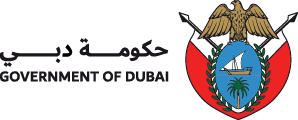- Bill Payment
- Activation of Electricity/Water (Move-in)
- Track Requests with login
- DEWA Service Guide
- Customer Happiness Charter
- D33 Eligibility Certificate
- Attending Technical Notifications – Electricity (Smart Response)
- Attending Technical Notifications – Water (Smart Response)
- Activation of Electricity/Water (Move-in)
- Deactivation of Electricity/Water (Move-out)
- Transfer of Electricity/Water (Move-to)
- Getting Electricity Supply for Tents
- Attending Technical Notifications – Electricity (Smart Response)
- Attending Technical Notifications – Water (Smart Response)
- Smart Living
- Consumption Verification - Electricity/Water
- Compare Multiple Accounts
- My Sustainable Living Programme
- High Water Usage Alert
- Consumption Assessment Tool
- View Bill
- EasyPay
- Bill Payment
- My Bills
- Bill Explanation
- Connections Estimate Payment & Refund
- Manage Collective Billing
- Manage Beneficiary Account List
- Multiple Accounts Payment (Tayseer)
- Refund
- Clearance Certificate
- Change/Update Premise Ownership
- Display Premise Number
- Information Update
- Billing Services Inquiries
- Bill Payment Channels
- Slab Tariff
- Tariff Calculator
- About VAT
- EV Green Charger Initiative
- EV Chargers Types & Instructions
- EV Charging
- EV Account & Charging Card Management
- EV Services' Inquiries
- Track EV Services' Request
- Display EV Green Charger Locations
- Regulatory Framework for EV Charging Infrastructure
- Dubai EV Community Hub
- Track Requests with login
- DEWA Service Guide
- Services and Facilities for Senior Citizens & Residents
- Customer Happiness Charter
- Suggestions, Comments & Complaints
- Display Temporary Power Interruptions & Roads Works
- STAY SAFE & POWERED
- Frequently Asked Questions & Tutorial Videos
- Customer Care Centre Services
- Customer Happiness Centres (Self-Service)

